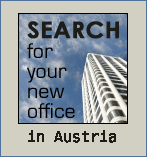Austria: country overview
17 May 2012by Ina Dimireva -- last modified 30 January 2017
Austria, with its well-developed market economy and high standard of living, is closely tied to other EU economies, especially Germany's. Its economy features a large service sector, a sound industrial sector, and a small, but highly developed agricultural sector. The most important sectors of Austria’s economy in 2015 were wholesale and retail trade, transport, accommodation and food services (22.9 %), industry (21.9 %) and public administration, defence, education, human health and social work activities (17.4 %). Austria’s main export partners are Germany, the US and Italy, while its main import partners are Germany, Italy and Switzerland.
Advertisement
Austria

Capital: Vienna
Geographical size: 83 879 km²
Population: 8 576 261 (2015)
Population as % of total EU: 1.7 % (2015)
Gross domestic product (GDP): € 337.162 billion (2015)
Official EU language(s): German
Political system: federal parliamentary republic
EU member country since: 1 January 1995
Seats in the European Parliament: 18
Currency: Euro. Member of the eurozone since 1 January 1999
Schengen area member? Yes, Schengen Area member since 1 December 2007.
Presidency of the Council: Austria has held the revolving presidency of the Council of the EU twice: in 1998 and 2006. The next time will be in 2018.
Economy Overview
 Austria, with its well-developed market economy, skilled labour force, and high standard of living, is closely tied to other EU economies, especially Germany's. Its economy features a large service sector, a relatively sound industrial sector, and a small, but highly developed agricultural sector.
Austria, with its well-developed market economy, skilled labour force, and high standard of living, is closely tied to other EU economies, especially Germany's. Its economy features a large service sector, a relatively sound industrial sector, and a small, but highly developed agricultural sector.
Economic growth has been relatively weak in recent years, approaching 0.9% in 2015. Austria's 5.8% unemployment rate, while low by European standards, is at its highest rate since the end of World War II, driven by an increased number of refugees and EU migrants entering the labour market. Without extensive vocational training programs and generous early retirement, the unemployment rate would be even higher.
Although Austria's fiscal position compares favourably with other euro-zone countries, it faces several external risks, such as unexpectedly weak world economic growth threatening the export market, Austrian banks' continued exposure to Central and Eastern Europe, repercussions from the Hypo Alpe Adria bank collapse, political and economic uncertainties caused by the European sovereign debt crisis, the current refugee crisis, and continued unrest in Russia/Ukraine. Early signs point towards a slight improvement in 2016, driven by low interest rates on government debt. Currently, the budget deficit stands at 2.7% of GDP and public debt has reached a post-war high of 84.2% of the GDP.
General
The Alps dominate the western and southern parts of Austria while the eastern provinces - including Vienna, the capital - lie in the Danube basin.
Until the end of World War I, Austria had been the centre of a vast empire, which controlled much of central Europe for centuries. Austria is now a federal republic, consisting of nine states.
Vienna hosts a number of international organisations, including the Secretariat of the Organisation for Security and Cooperation in Europe, the International Atomic Energy Agency and the Organisation of Petroleum Exporting Countries.
The Austrian Parliament has two chambers. The National Council, or Nationalrat , has 183 members, who are elected by direct popular vote to serve a five-year term. The Federal Council, or Bundesrat , is the upper house with about 62 members who represent each province. Its members serve a four or six-year term.
Austria has a rich cultural heritage. Wolfgang Amadeus Mozart occupies a place of his own as a composer, while the music of Franz Schubert also enjoys great popularity. In the world of philosophy and ideas, the work of Siegmund Freud continues to provoke controversy, while Ludwig Wittgenstein was one of the major influences in 20th century philosophical thinking. In art, the paintings of Gustav Klimt from the late 1800s are widely admired.
Austria has a mixed industrial and agricultural economy, while tourism is also an important source of income.
In cuisine, Austrian specialities such as Wiener Schnitzel and Apfelstrudel have become international dishes which need no translation.
Useful links
The Commission's Representation in Austria
European Parliament office in Austria
Source: European Commission, CIA - The World Factbook

